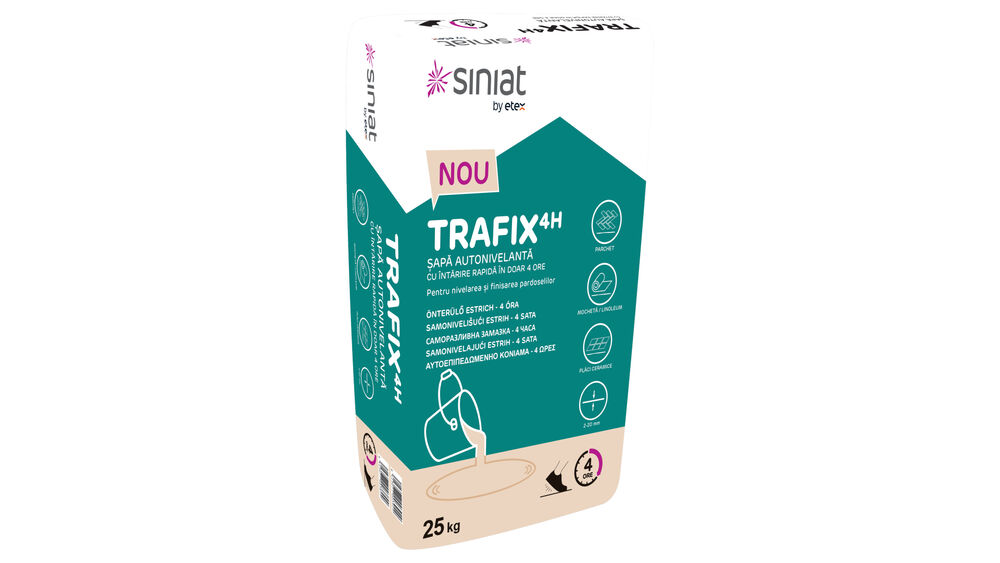TRAFIX 4H
Self-levelling floor screed with fast setting time - ready for foot traffic in just 4 hours.
Gypsum-based product, ideal for levelling and finishing interior floors. Designed for indoor use, it is applied prior to the installation of final floor coverings such as parquet, carpet, linoleum, PVC, or ceramic tiles.

